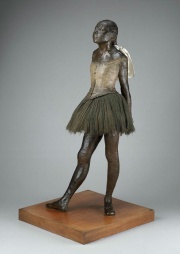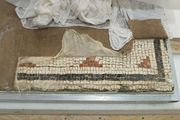Difference between revisions of "Gauze"
Jump to navigation
Jump to search
| Line 7: | Line 7: | ||
[[File:DT 5-28-2004 Gauze facing layer 2.jpg|thumb|Gauze facing layer]] | [[File:DT 5-28-2004 Gauze facing layer 2.jpg|thumb|Gauze facing layer]] | ||
| − | [[File:1.21.2005 04-Facing removed.jpg|thumb|Gauze facing removal] | + | [[File:1.21.2005 04-Facing removed.jpg|thumb|Gauze facing removal]] |
== Synonyms and Related Terms == | == Synonyms and Related Terms == | ||
Latest revision as of 14:09, 2 August 2022
Description
A thin, loosely woven fabric with a self-finished edge. Gauze fabric is thought to have originated in the mid-16th century in Gaza, Palestine. It is typically made from Cotton, Wool, Silk, or synthetic fibers with a loose, open weave. Cotton gauze is often used for surgical dressings and Cheesecloth. The term gauze has also been applied to any open weave material such as a sheet of wire screening or plastic mesh.
See also Leno weave.
Synonyms and Related Terms
gauze weave; gasa (Esp.); gaas (Ned);
Resources and Citations
- Rosalie Rosso King, Textile Identification, Conservation, and Preservation, Noyes Publications, Park Ridge, NJ, 1985
- Random House, Webster's Encyclopedic Unabridged Dictionary of the English Language, Grammercy Book, New York, 1997 Comment: originated 1561
- Fairchild's Dictionary of Textiles, Phyllis G.Tortora, Robert S. Merkel (eds.), Fairchild Publications, New York City, 7th edition, 1996
- Encyclopedia Britannica, http://www.britannica.com Comment: "Gauze." Accessed 10 Aug. 2004 .
- The American Heritage Dictionary or Encarta, via Microsoft Bookshelf 98, Microsoft Corp., 1998
- Website: www.fabrics.net
- Art and Architecture Thesaurus Online, https://www.getty.edu/research/tools/vocabulary/aat/, J. Paul Getty Trust, Los Angeles, 2000


